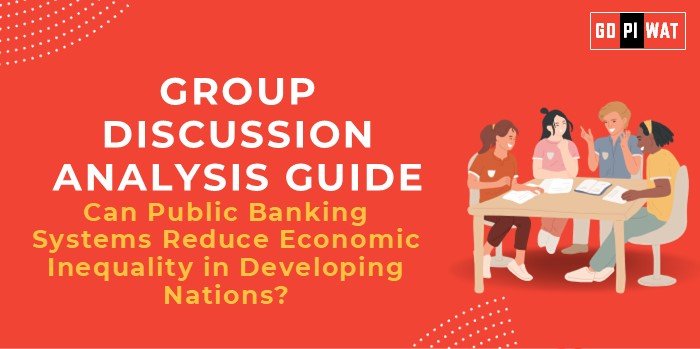📋 Group Discussion Analysis Guide: Can Public Banking Systems Reduce Economic Inequality in Developing Nations?
🌐 Introduction to the Topic
Opening Context: Public banking systems have emerged as a vital tool in fostering financial inclusion and addressing socio-economic disparities in developing nations. Their role in bridging the inequality gap is critical as economic disparities continue to widen globally.
Topic Background: Public banks are state-owned financial institutions that prioritize developmental goals over profit maximization. In developing countries, where income inequality is a pressing issue, these institutions play a pivotal role in providing accessible credit, fostering rural development, and supporting small enterprises.
📊 Quick Facts and Key Statistics
- 🌍 Unbanked Population: Over 1.4 billion people worldwide lack access to basic financial services, with the majority residing in developing nations (World Bank, 2023).
- 🏦 Public Bank Lending Share: Public banks account for 25% of global banking assets but play a larger role in emerging economies.
- 📉 Impact on Poverty: Access to public banking reduces poverty rates by 20-25% in rural communities (UNDP, 2023).
- 💵 Microcredit Reach: Public banking systems facilitate 60% of microloans globally, benefiting small farmers and entrepreneurs (IFC, 2023).
🧑🤝🧑 Stakeholders and Their Roles
- 🏛️ Government Agencies: Policy formulation, funding, and regulatory oversight.
- 🏦 Public Banks: Implementation of financial inclusion programs and low-interest loans.
- 👥 Citizens: Participation as borrowers and depositors.
- 🌐 International Organizations: Support with funding, capacity building, and best practices.
🏆 Achievements and Challenges
🎯 Achievements:
- Financial Inclusion: Expanded access to affordable credit in rural areas, boosting agricultural productivity.
- SME Growth: Provided critical funding to small and medium enterprises, fostering entrepreneurship.
- Social Safety Nets: Supported social programs through direct benefit transfers.
⚠️ Challenges:
- Inefficiency: Operational inefficiencies and high non-performing assets in some public banks.
- Corruption Risks: Susceptibility to political interference in lending decisions.
- Global Comparison: While public banks in countries like Germany and South Korea have been highly successful, nations like Venezuela have faced setbacks due to governance issues.
📋 Structured Arguments for Discussion
- Supporting Stance: “Public banking systems are indispensable in reducing economic inequality by ensuring equitable access to financial services.”
- Opposing Stance: “Public banks are prone to inefficiencies and political interference, which can exacerbate rather than reduce inequality.”
- Balanced Perspective: “While public banks have significant potential to reduce inequality, their success depends on robust governance and accountability mechanisms.”
💬 Effective Discussion Approaches
- 💡 Opening Approaches:
- “In developing nations, only 55% of adults have access to financial services, emphasizing the need for public banks.”
- “The World Bank estimates that inclusive financial systems could boost GDP growth by 2-3% annually in emerging markets.”
- 💡 Counter-Argument Handling:
- “While inefficiencies exist, digitization efforts can transform public banks, making them more efficient and transparent.”
📈 Strategic Analysis of Strengths and Weaknesses
Strengths:
- Accessibility in remote areas.
- Government-backed stability.
- Focus on developmental goals.
Weaknesses:
- Operational inefficiency.
- Risk of mismanagement.
Opportunities:
- Expansion through digitization.
- Partnerships with fintech firms.
Threats:
- Competition from private banks.
- Political interference.
📚 Connecting with B-School Applications
- Real-World Applications: Public banking as a case study for financial inclusion and socio-economic development in courses like development finance and policy analysis.
- Sample Interview Questions:
- 🧐 “How can public banks compete with private institutions in a digital economy?”
- 📘 “What measures can mitigate corruption risks in public banking systems?”


